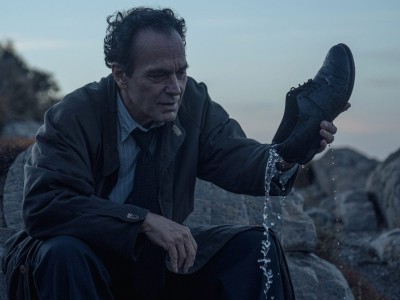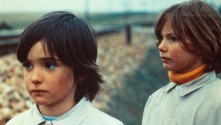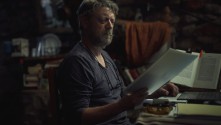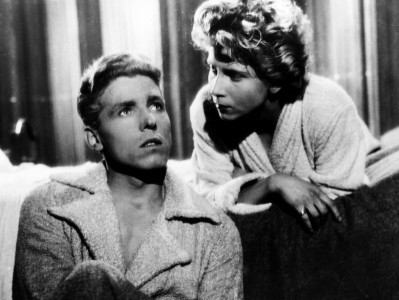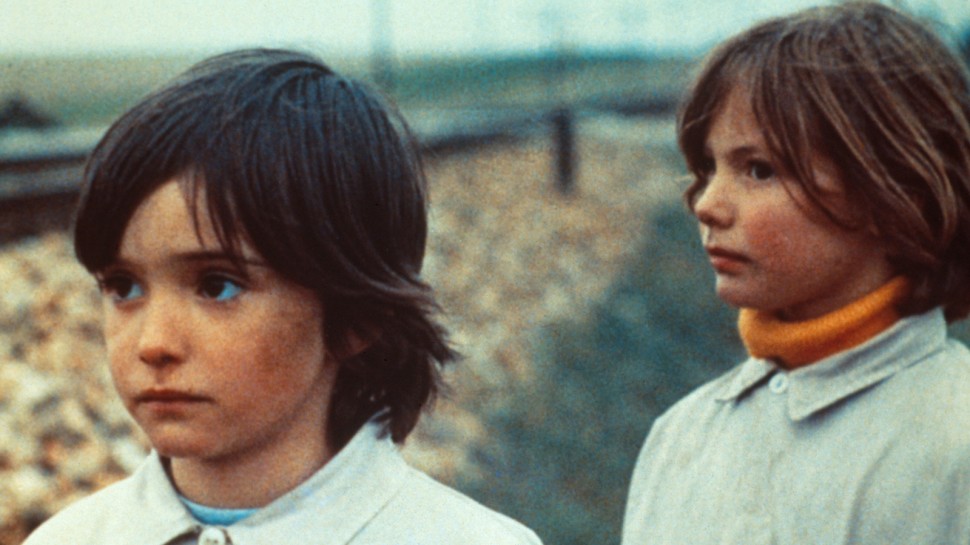
The Spirit of the Beehive
(El espíritu de la colmena)
With Fernando Fernán Gómez, Teresa Gimpera, Ana Torrent.
Spain, 1973, 35mm, color, 99 min.
Spanish with English subtitles.
Print source: HFA
It is true that everything begins with “Once upon a time,” but this story threads slowly, retaining the indeterminacy of the meaning of the world that the film reveals and those who inhabit it. The two little protagonists go to the cinema, return alone, go to bed and before falling asleep the younger one asks her sister about the movie they saw. She wants to know why the monster killed the girl. Their father is seen working with his honeycomb panels and at night writing a philosophical essay about the world of insects responsible for honey. Meanwhile, the mother writes a letter and immediately goes to the train station to send it to a mysterious recipient. As she puts the letter on the train, a soldier looks at her from the window of a car and she looks back at him: an indecipherable but sufficiently intense exchange takes place, no less ambiguous than the letter. (This sequence that opens the arrival at the station is a prodigious moment, one among many, about the mastery of cinematic space). All this happens over thirty minutes, leading to a scene in which all the characters— for the first time, little by little—come together. There is something in the mise-en-scène that indicates disintegration and fatigue, a mystery covered with a barely expressed discomfort. It is not known, not named, but is perceived. There are two monsters in the film: Frankenstein, in the vision of James Whale, projected in a cinema in a lost town in Spain in the 1940s; and a second abject creature, a monster that is not projected, but is present as the spirit of the times: Francoism.
El espíritu de la colmena is nothing other than the life of a family that seems to live in exile in a small town deep in the Spanish countryside, a place where politics barely register. A photo glimpsed by the little girl in an album reveals that her father had a close relationship with Miguel de Unamuno. Why would an intellectual dedicate himself to beekeeping then? The fact that Maurice Maeterlinck wrote La vie des abeilles (The Life of the Bee, 1901) is not sufficient reason to interpret the destiny of that man, perhaps interested in the same thing, but forced into it by other circumstances. The allusion to Francoism and monsters is fully reflected when the youngest girl, Ana (interpreted by Ana Torrent), driven by curiosity, tries to solve what is monstrous and randomly encounters a person persecuted by the regime. In this context, Ana starts on the path—always incomplete—of understanding finitude. The girl in the movie has died. The man Ana found in an abandoned room in the vastness of the countryside and took care of for a while has also died. Whale's ellipsis protects Ana from contemplating infanticide; nor does she witness a nighttime shooting, though the blood scattered on the ground confirms her suspicion. ... – from the introduction by Roger Koza
